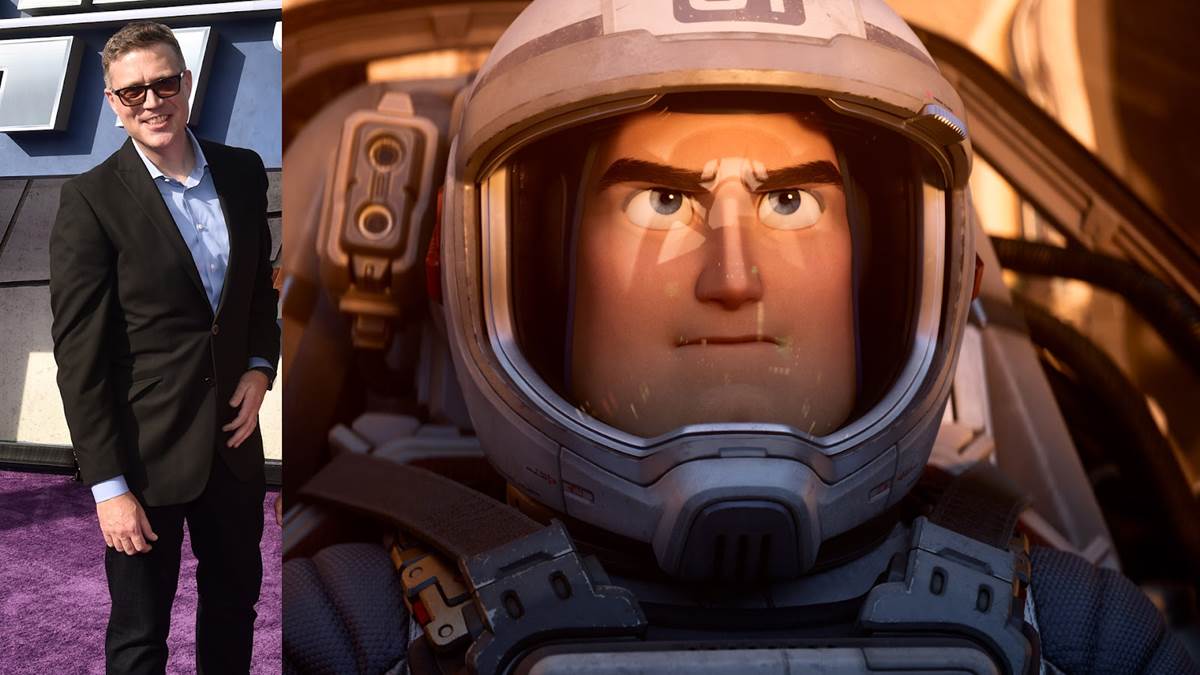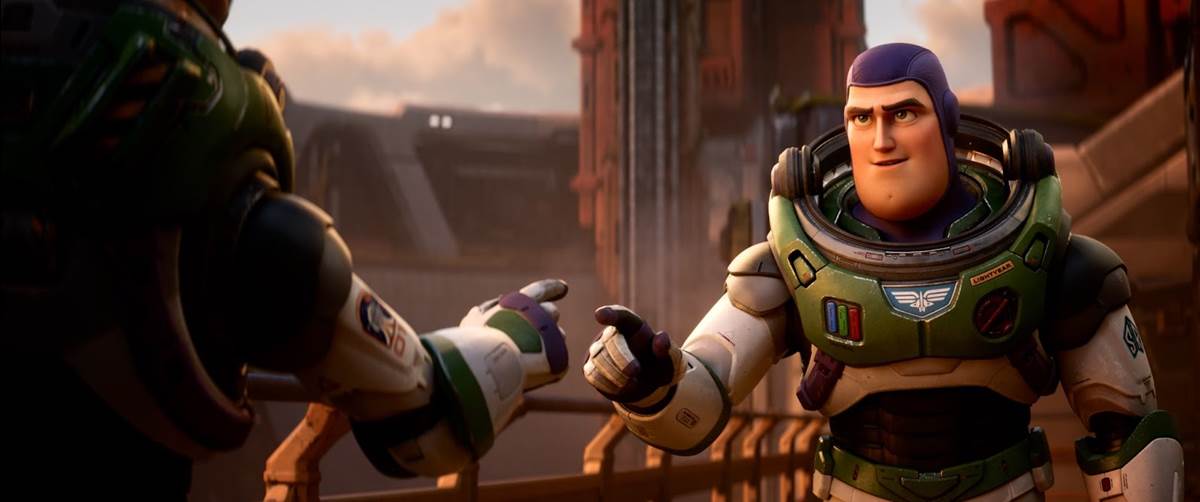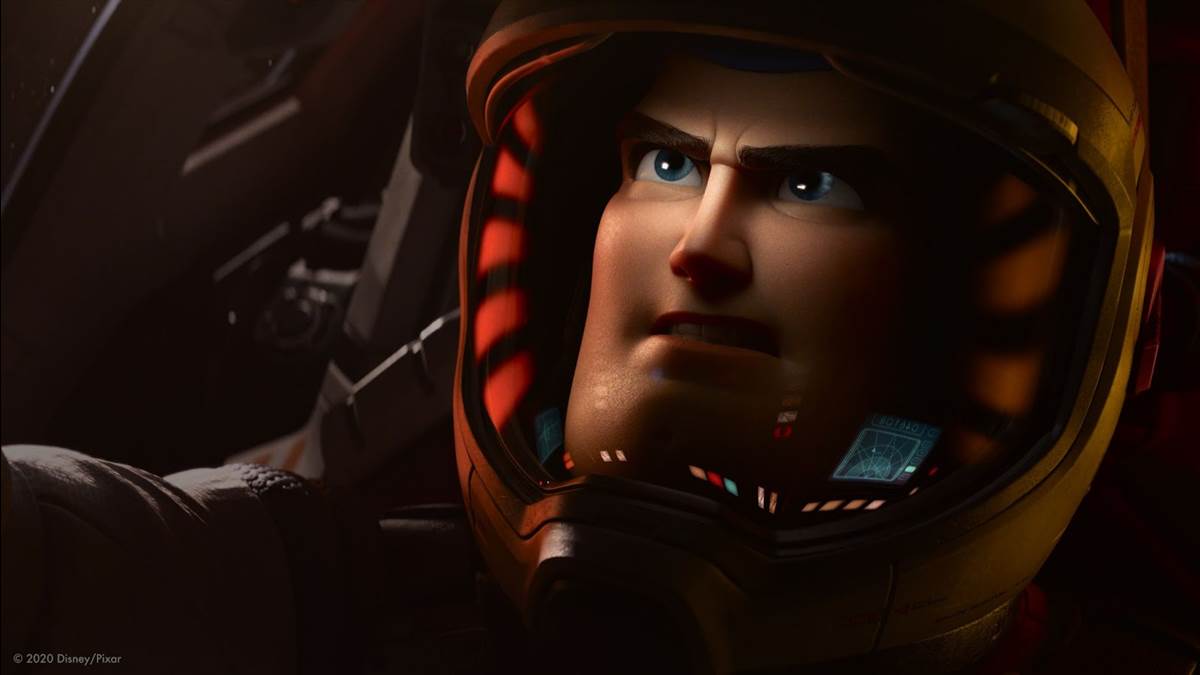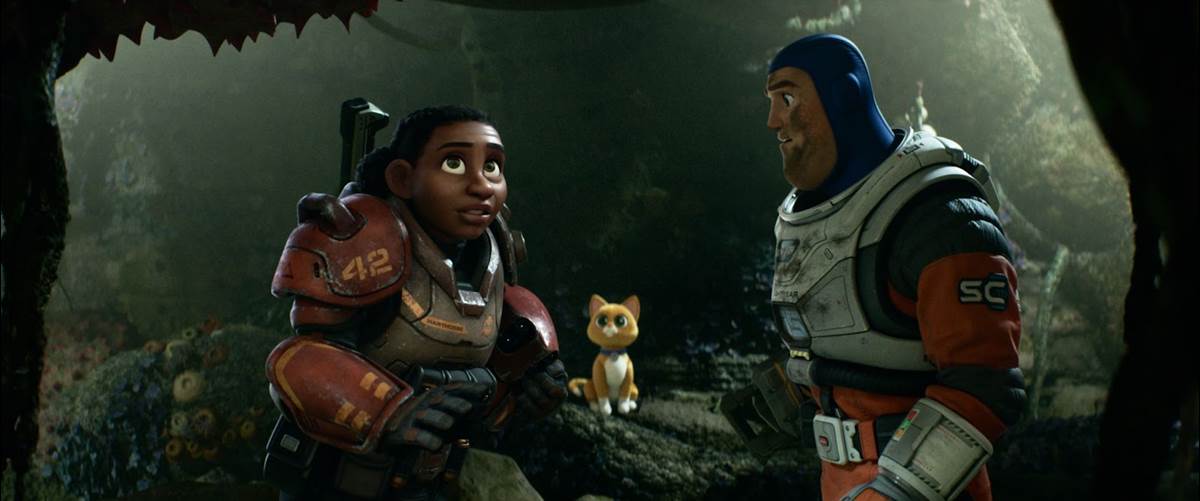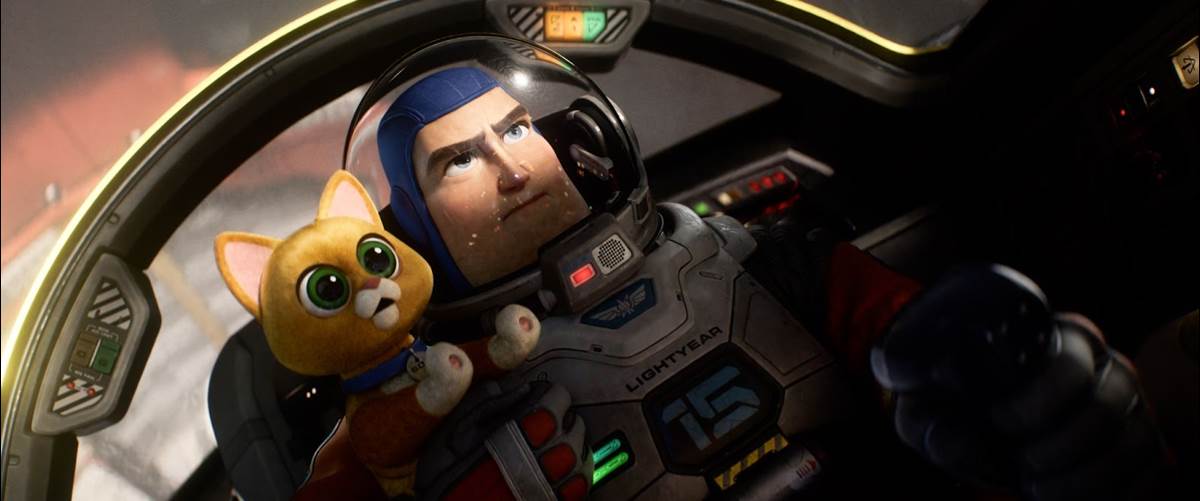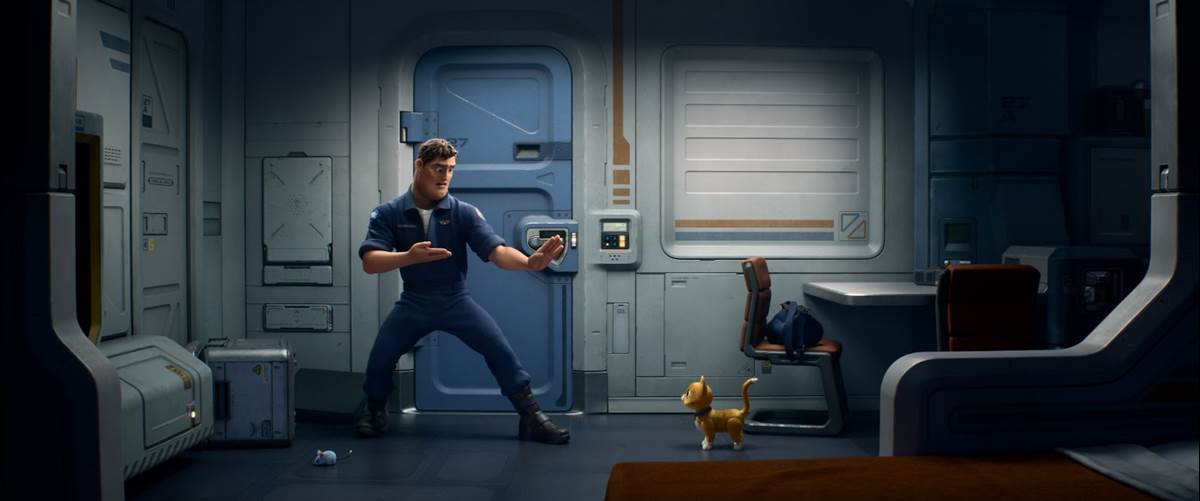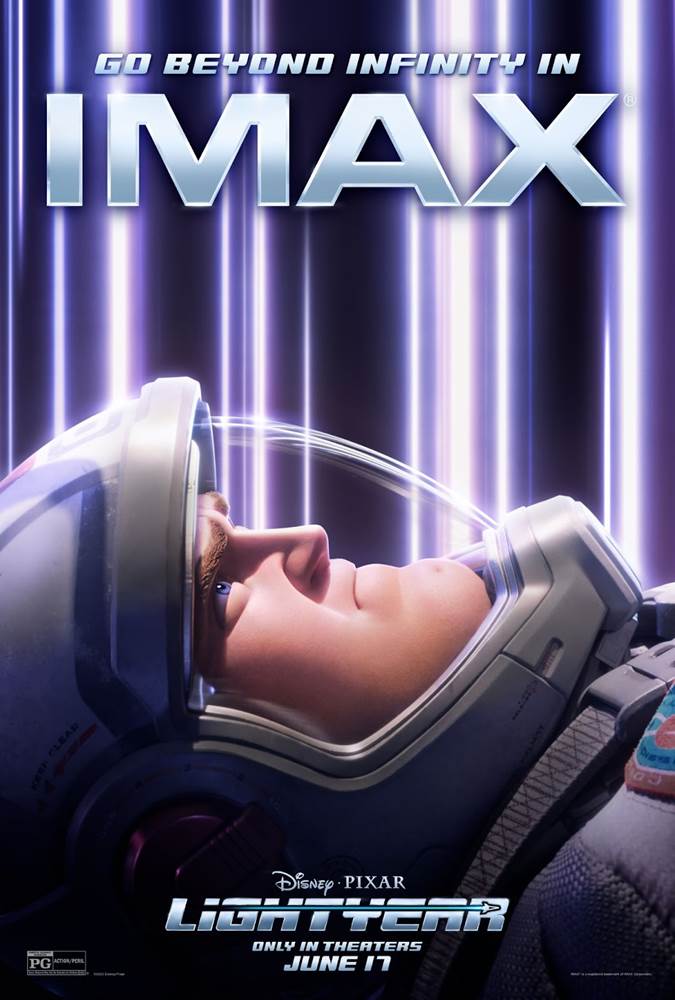Filmmaker Angus MacLane has been working in the animation industry since the mid-1990s, and he joined the now-Disney-owned Pixar Animation Studios as an animator soon thereafter. In the time since, he’s contributed to Toy Story 2, Monsters Inc., Finding Nemo, The Incredibles, Ratatouille, WALL-E, and Up, eventually co-directing Finding Dory in 2016.
Now MacLane has taken the lead on the Toy Story spinoff Lightyear, for which he helped come up with the story and served as the sole director. During a virtual press conference last week, he spoke about the movie’s science-fiction influences, why Chris Evans was cast as Buzz Lightyear instead of Toy Story star Tim Allen, the evolution of Sox the cat, and why the film was designed to play on IMAX screens.
First Angus MacLane talked about how the concept of Lightyear originally came about. “Well, the idea came to me as I've always wanted to tell or know about the backstory of the Space Rangers and Star Command and Buzz Lightyear– what the movie is from that. And I also wanted to make something that was fun to make after doing Dory, which was fun, but it was really challenging when you have a protagonist that's always forgetting about what they want. So what I decided to do was just think, ‘Well, wait a minute, why don't we just make that movie like a cool sci-fi movie?’ And I pitched it just like that: ‘What was the movie that Andy saw that made him want a Buzz Lightyear figure? Why don't we just make that movie– just make something awesome and simple like that, with all of the nerdy, geeky, sci-fi goodness that we want to see in the movie… just make the Buzz Lightyear movie, make one adventure of that. That was really the initial pitch. That was the simple idea that we sold within the studio.”
MacLane also talked about the influence of science fiction and other genres on Lightyear. “I would say, narratively, we focused at the beginning looking at thrillers and what made thrillers work, as sci-fi is often just like a mayonnaise that's spread over the film– it's not a specific genre. It's a condiment. You can't base a meal around mustard or mayonnaise. I mean, you can, but it just tends to fall apart. What can you do with mayonnaise? [laughs] So yeah, the idea was we looked at the genre of thrillers and tried to figure out what made them work. To start the Buzz Lightyear movie, in the same way that Raiders of Lost Ark was thought of as a series of setpieces, we were working on the setpieces that would be cool to see in the movie, and what the emotional hook would be for the movie. ‘Make me care about Buzz Lightyear's journey.’ Those are really the two things we did to start working on the movie.”
But what about the specific science fiction movies that are referenced in the film, like 2001: A Space Odyssey and Star Wars? “Certainly, the film is meant to be a celebration of all of these movies that we were inspired by, but I never wanted them to distract from the main story we were telling. 2001, actually, I have a complicated relationship with, since I first saw it when I was five in the theater. And having seen Star Wars, I was disappointed there were not enough lasers and spaceships. But the point is, yes, we were influenced by these films, and there are some visual nods to [them].”
“I think we wanted to capture the feeling of watching one of those movies and as a kid, the way that those movies would overwhelm you with the potential of traveling to another world and going on this fun space adventure that narratively would propel you through all of these little events– like a ride in the best sense of the word. [I’m] not saying ‘ride’ as if there isn't an emotional component to the film, because there is, but we want it to be first and foremost fun. That was always the spectrum or the filter we were going for: ‘Is this fun? Can we make this awesome?’ That certainly included a lot of influences and subtle visual references to this history of sci-fi, from the very beginning. Some of the earliest films– you look at Metropolis, [The] Lady Vanishes– we went all the way back to some earlier cinema so that we get to the raw, core elements of what has made cinema so successful.”
He also touched on the spirit of diversity among the cast and characters of Lightyear. “Representation was something we were excited about, but more than anything, it's a reflection of the reality of the world that we live in. [Growing up,] science fiction was always my entry into a more diverse society, starting with Star Trek. At the time, [that] was very diverse for a show of its era. And so it's in that spirit that we take from Star Trek of trying to find the most diversity we can in our cast.” MacLane also mentioned that Uzo Adubo’s character Alisha Hawthorne was inspired by his own grandmother. “My first memories of my grandma was that she was a single parent who was the bureau desk chief. She was like His Girl Friday in Dayton, Ohio. She smoked like a chimney and unfortunately died from emphysema, but she was such a tough no-nonsense character who had no time for children. It just really was such an inspirational thing. And I found out years later, she actually was a codebreaker during World War II. That was the kind of mind that I imagined for Alisha– someone that would be this tough leader.”
Angus also commented on the decision to cast Chris Evans as Buzz Lightyear instead of Tim Allen, who voiced the character for decades as a toy. “The character is different– having a different voice does differentiate. It's two different tracks. When you see the movie, you'll go, ‘Okay, yeah, I get it.’ It makes a lot more sense when you see how the tone of this film is different [from] the character in Toy Story, in that it's a little more well-rounded. It's technically a little smarter, because he's not the comic relief.” So if Lightyear is the movie Andy saw that made him want a Buzz Lightyear toy, was it a live-action movie in that universe or an animated one? “I would say live-action. Why do the characters look so much more realistic than Andy? That's because Andy is 30 years older than them. And as you grow older, you become more realistic in the Andy universe. [laughs]”
Next MacLane talked about the character of Sox, the animated cat who serves as Buzz’s sidekick in the movie. “Sox was named by Matt Aldrich, who was the first writer on the film, who left the project amicably to work on his own stuff. Sox was something he and I developed early on [who] was an antithesis to all the things going on in the film. He was very low-tech. He was very clunky, where Buzz was going to look very sleek and was going to move very believably; this would be like a cat that was fooling no one. It looks like a cat, but [it has] limited robotic movement. The kind of animation I think is funny is based around a pigeon. If you think about a poor pigeon, it has very few moving parts going on inside of it, and that's really funny to me. That's what I've always tried to do as an animator– you think about Ken in Toy Story 3 or you think about WALL-E. These are characters that don't move that much. but every time they move, there's an appeal to them. There's a clarity and a simplicity. There's no place in motion to hide.”
“So because this is a movie kind of [conceptually] made in the 80s, Sox represents the kind of clunky animatronic fascination that was sweeping the nation then. It was like, ‘We'll have anthropomorphized animals that are completely clunky.’ Disneyland had a lot of these, and I realized it was never clear to me if they thought kids were supposed to think they were alive. But they have their own goofy charm for their limitations, and that's what Sox was– a completely limited cat character that was good-natured and was always there for Buzz. There used to be more with him before we had Alicia. Buzz wouldn't go out. He wouldn't do any social activities, so Sox kept pitching, ‘Hey, maybe you want to go out, meet some people? You know, there's a party going on. Would that be something you'd be interested in? It's Shark Week.’ That kind of thing. He was always kind of the guy in the corner trying to get [Buzz] back out there. ‘Come on, you can do it.’ This is [his] hype man, his promoter.”
Lastly, Angus MacLane discussed the choice to make Lightyear the first Pixar feature designed to be seen on IMAX screens. “The origin of it was [that] I knew that this film needed to be a theatrical experience. And as part of the theatrical experience, animation oftentimes is seen as a ‘kid's table,’ like ‘less than.’ IMAX is a format that celebrates the cinematic experience, and by doing a film in IMAX, you're kind of signifying, ‘This is a movie that's big.’ By doing it from the beginning in IMAX, you're really saying ‘This is something the company believes in [and] IMAX believes in to give you a premium format experience. Once I had that idea, I pitched it to the president of Pixar, Jim Morris, [and he said], ‘Yeah, absolutely.’ He totally got the value of investing and making this an IMAX film from the beginning.”
“Going in and out of the IMAX [aspect ratio] was really fun. There were some times where we’d go, ‘I think it should [happen] here.’ And [we] tried [and] it didn't work at all. So just the IMAX review process was so fun. We’d go to San Francisco to the Metreon [IMAX theater]– the group of us [went] to a big theater with like ten people in it in the middle of the pandemic– ‘Let's watch part of our movie and see how it works in IMAX.’ And then when the IMAX technicians are saying, ‘This is really cool,’ [we knew it was working]. They see everything. And that was probably the earliest, best compliment, when the IMAX folks were nerding out about the movie and the experience they were getting. That meant a lot.”
Lightyear opens tomorrow, June 17, in theaters nationwide.

